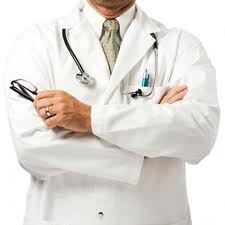In America, Bigger is Better
Public interest in organic foods has increased in recent years, but so has governmental experimentationwith genetically modified organisms (GMOs). Almost everyone knows about or has at least heard of, Monsanto—the U.S. based agricultural biotechnology corporation. This monopolized food company is responsible for integrating GMOs into almost every food product available to consumers in the United States and certain areas around the world. Other GMO companies, such as AquaBounty Technologies (a fish aquaculture company), have started their own experiments. Vegetables, traditional farm animals, and now fish are being genetically altered to grow larger. Although many countries frown upon experiments to produce these “frankenfoods”, it has become a norm in American culture.
A Franken-what?

The original term “frankencrops” compares GMO plants to the fictional Frankenstein character. Like the character, these crops are a great idea in theory and are produced with good intent. Both, however, are monstrous and simply not natural in society. Despite the lack of knowledge regarding health hazards, it didn’t take long for the FDA to approve the integration of GMOs into the American consumer market. A study with GMO salmon has surfaced and the company responsible, AquaBounty, is asking for FDA approval in setting these “frankenfish” into the wild, even though projected results are not 100% guaranteed. AquaBounty recently received close to $500,000 from the USDA to test the sterility of the GMO salmon, attempting to make the fish incapable of reproduction. Nonetheless, there is still a small percentage that can reproduce and threatens the wellbeing of wild salmon and other fish if they escape.
What Are the Concerns?
It is obvious that GMO farmed salmon area much larger than organic salmon, (about twice the size of organic salmon). But bigger isn’t always better. The FDA has results from studies indicating that GMO salmon are typically:
• More allergenic
• Carcinogenic
• Less nutritious
• Likely to change bacteria in the human digestive system
 Organic salmon are natural, not injected with and additives or hormones. The hormones used to make GMO salmon huge are not only harmful to the fish, but the human body as well. The bodies of the GMO fish are comparable to those of the commonly known GMO chickens; they grow so large so quickly that their bone structure cannot support the weight and deformation occurs. After a GMO has been eaten, the toxins are absorbed in the human digestive tract causing intestinal bacteria to be altered, which can lead to many dangerous outcomes, including birth defects.
Organic salmon are natural, not injected with and additives or hormones. The hormones used to make GMO salmon huge are not only harmful to the fish, but the human body as well. The bodies of the GMO fish are comparable to those of the commonly known GMO chickens; they grow so large so quickly that their bone structure cannot support the weight and deformation occurs. After a GMO has been eaten, the toxins are absorbed in the human digestive tract causing intestinal bacteria to be altered, which can lead to many dangerous outcomes, including birth defects.
What Can We Do About It?
Usually it’s America who rescues the world. Now, it is us who need the rescuing. As consumers, we essentially have the power to change or prohibit the foods that are available to us on the market. Boycott with your checkbooks! If you don’t agree with corporations trying to monopolize an industry and take over our food manufacturers, then don’t buy their products. If you don’t agree with how the animals or crops are farmed and feel they are hazardous, then don’t buy these major corporations’ products. It simply makes sense to support the local, organic farmers. They respect the organisms that they grow and the consumers who eat them. Our nation was formed by hardworking, organic farmers who took pride in their work. Unless GMOs are able to interact with these organic organisms and spread their harmful effects, there is never a concern of malnutrition with organic foods. Let’s save our country and our world; let’s take a stand and end this GMO takeover!
-Jayme Young
Works Consulted
http://www.grist.org/food/2011-09-29-feds-help-gmo-salmon-swim-upstream
http://www.organicconsumers.org/articles/article_24044.cfm
http://www.huffingtonpost.com/2011/09/12/genetically-engineered-salmon_n_958149.html




















